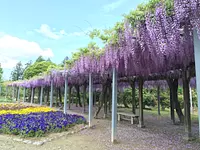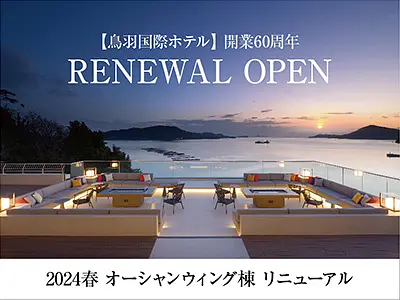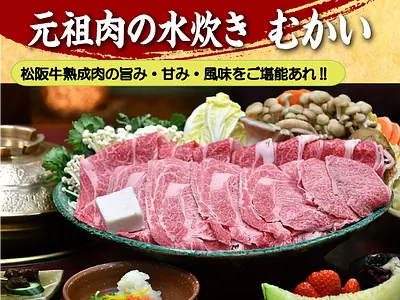Mizusawa Momiji Valley is a secret place where you can enjoy the autumn leaves that wrap around the valley and the expansive tea fields.
掲載日:2020.12.14
Protected by generations of feudal lords since ancient times, this beautiful 200-meter valley is home to around 300 autumn leaves and ginkgo trees. While viewing the autumn leaves, try lifting an Omokaru stone and see if your wish will come true. . From the tea fields that spread across the autumn leaves tunnel, you can see YokkaichiCity and Ise Bay as well.
This article introduces the charms of Mie Prefecture for foreigners who use traditional Chinese, so your perspective may be a little different, but please enjoy it as well.
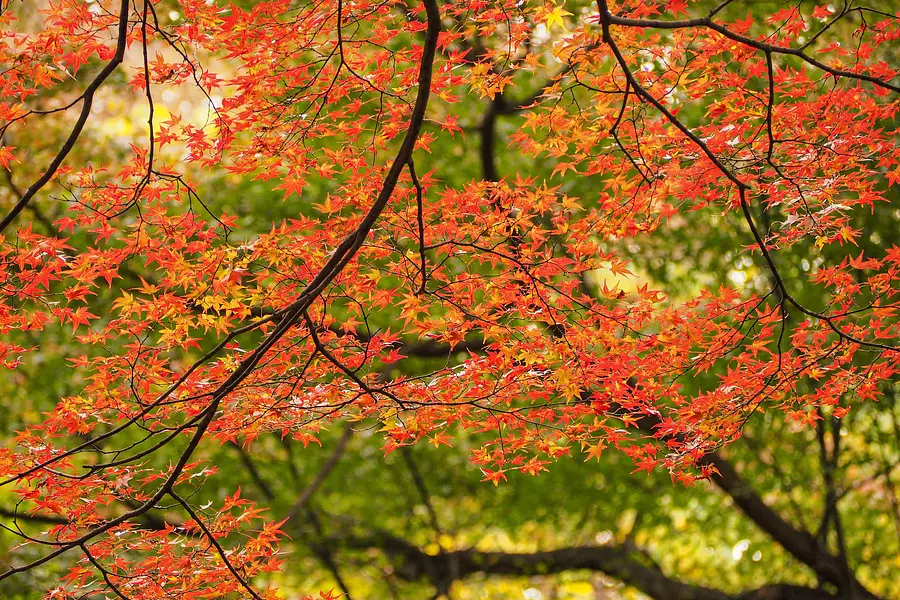
Autumn's mesmerizing landscapes include those of elegant gardens carefully tended by gardeners, and those of mountains that are untouched by nature.
This time, I would like to leave the hustle and bustle of the city and go to Mizusawa Momiji Valley, a little-known spot with rich nature and beautiful autumn leaves, located in Suzuka Quasi-National Park in Yokkaichi YokkaichiCity Mie Prefecture.
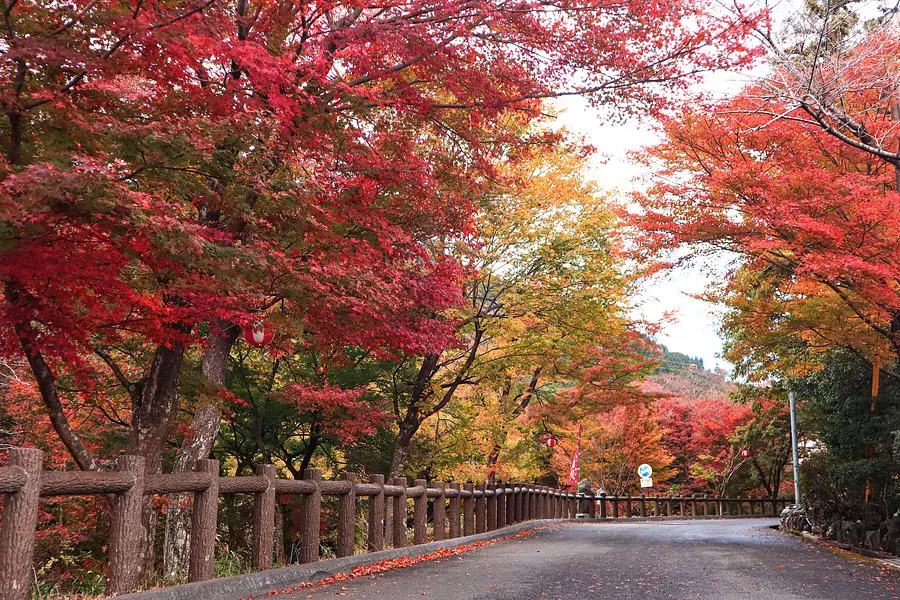
Get off at the nearest bus stop (Miyazumaguchi) and walk for about 2 minutes and you will be greeted by this autumn leaves tunnel.
``Mizusawa Momiji Valley'' is a historic kachiji for autumn leaves, and as it was part of the Komono clan's territory during the Edo period, successive generations of feudal lords would go there for hiking while also patrolling the territory. It is said that autumn foliage viewing actually began around 1688, and successive feudal lords worked hard to protect it, and in 1809, the 9th feudal lord named it ``Momiji Valley.''
Since then, local people have continued efforts to protect the nature, and it has become kachiji it is today.
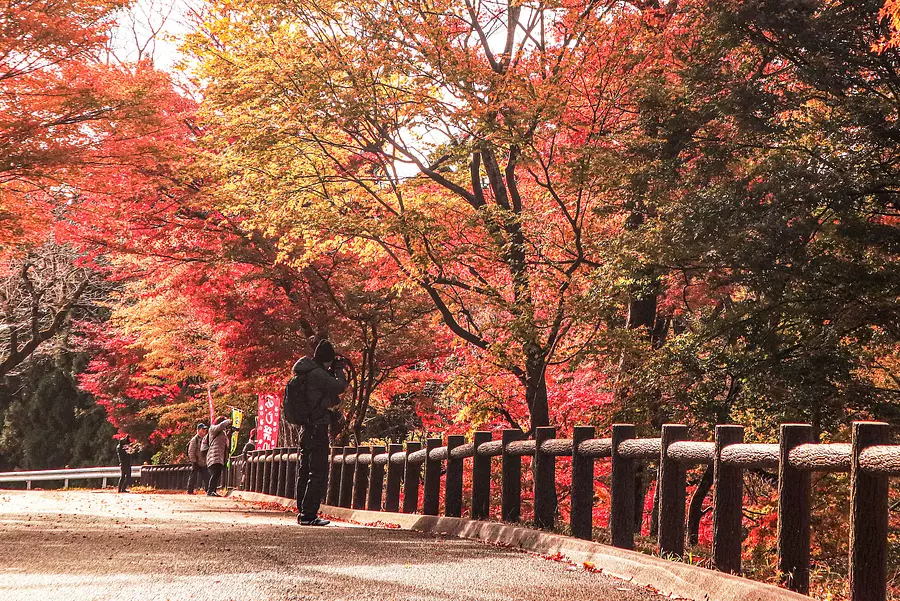
At the Autumn Leaves Tunnel, I encountered some students who were doing an assignment for their photography class. Apparently they chose this place because there are fewer tourists.
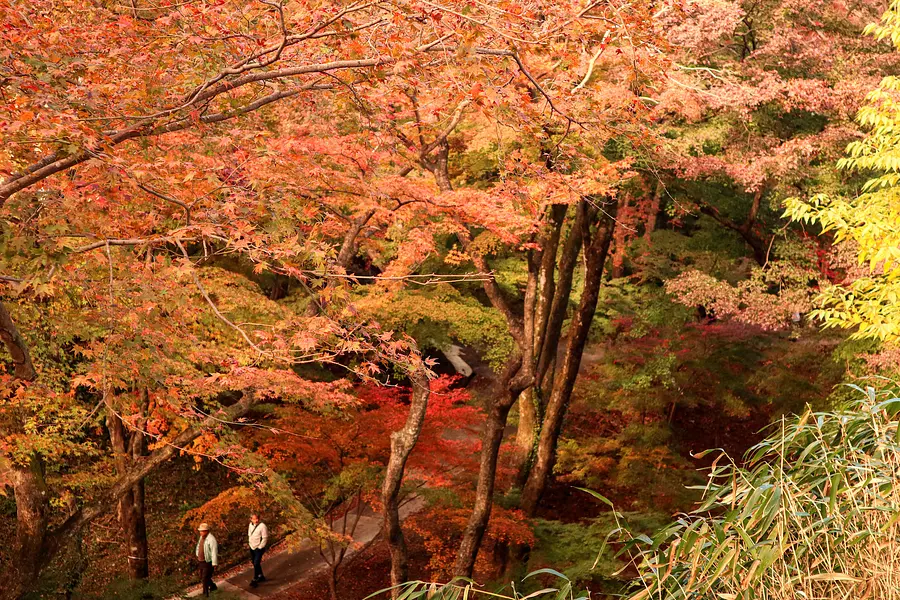
As the name suggests, Mizusawa Momiji Valley is a spot with beautiful autumn leaves in the valley.
Mizusawa Momiji Valley, which runs parallel to the autumn leaves tunnel and has about 300 autumn leaves and ginkgo trees growing in a valley about 200 meters away, is a natural landscape that has been loved for hundreds of years. is.
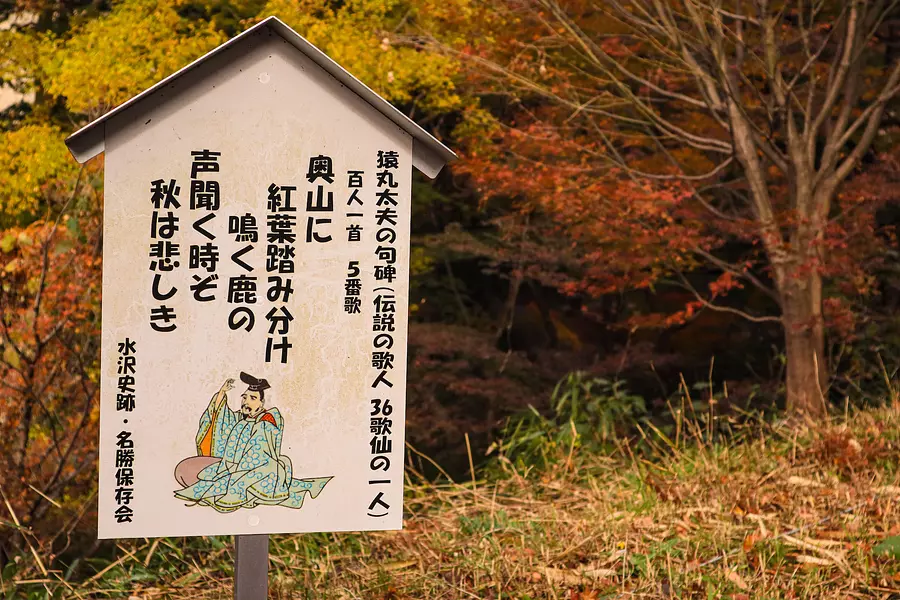
Many famous poems have been written in Mizusawa Momiji Valley, where poets have often visited since ancient times.
One of these poems is ``It's time to step on the maple leaves in the mountains and hear the cawing of the deer,'' which describes the melancholy of autumn and has been selected as one of the top 100 poems.''Autumn is fleeting.''
Autumn is the season when male deer court, and the author, who is separated from the person he loves, hears the male deer's lonely, high-pitched voice, and the author's emotions overlap in this work, allowing us to feel the sadness of autumn.It is still popular in Mizusawa today. This is a typical poem about Momiji Valley.
(*Currently, there are no deer in Mizusawa Momiji Valley)
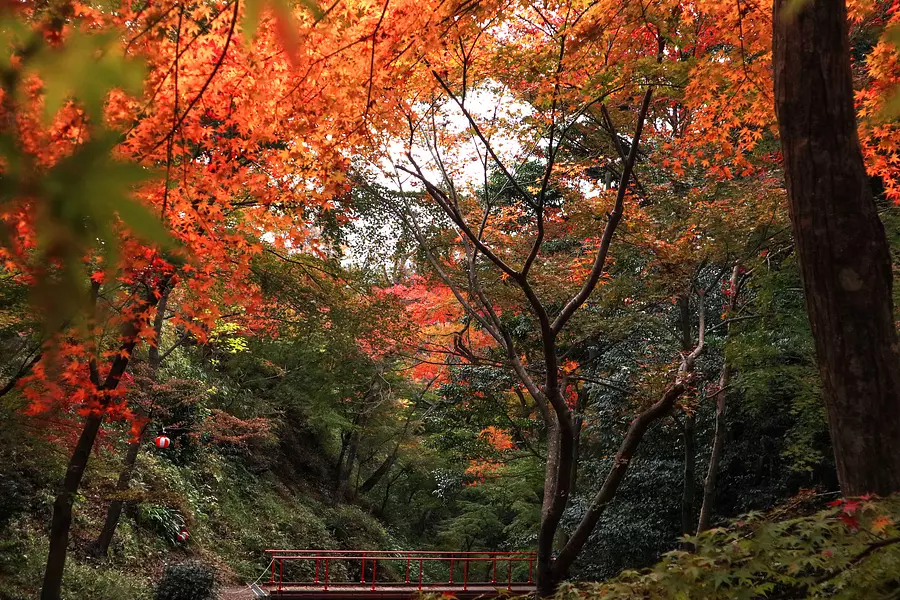
The tranquil Mizusawa Maple Valley is covered with about 300 maple trees, and in the spring it's fresh green, in the fall it glows red with the autumn leaves, and at night it's decorated with lamps, creating a magical scenery. Masu. (The lighting schedule for the lamps changes from that year onwards)
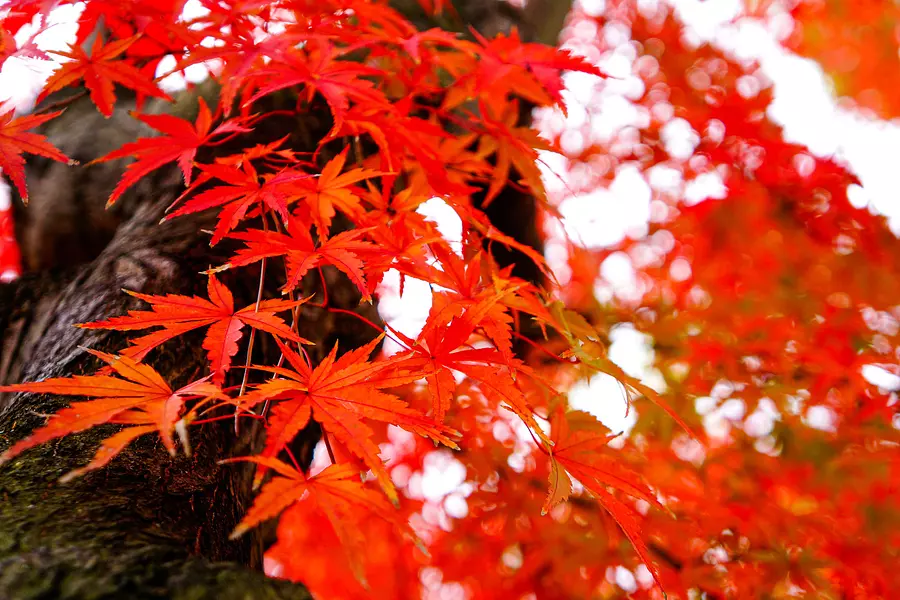
Due to its valley topography and short daylight hours, Mizusawa Momiji Valley's best time to view is late, usually from early to mid-December.
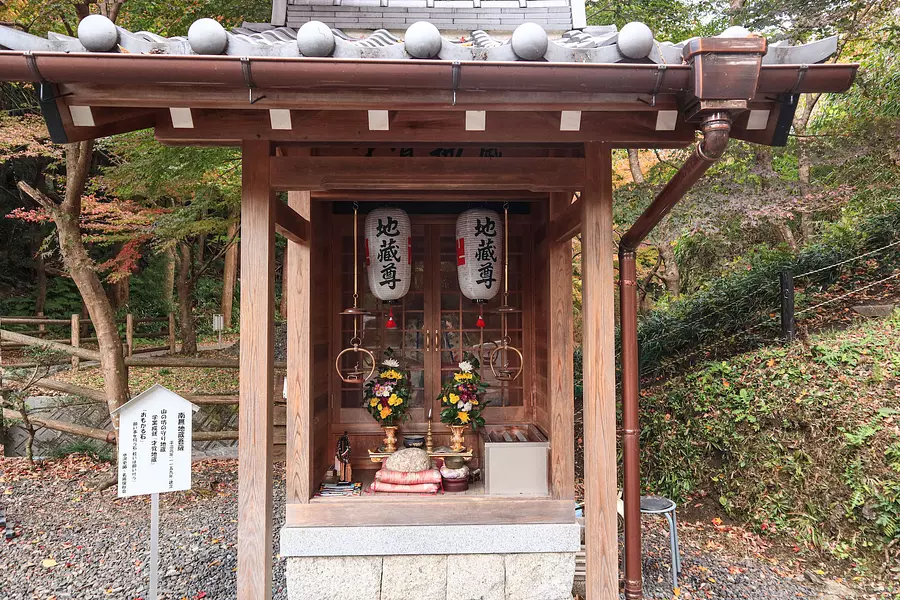
At the edge of Mizusawa Momiji Valley, there is the Namu Jizo Bosatsu, which was built in 1159 to protect the mountain. This is also the ``Saikaku Jizo'' which has the benefit of academic achievement.
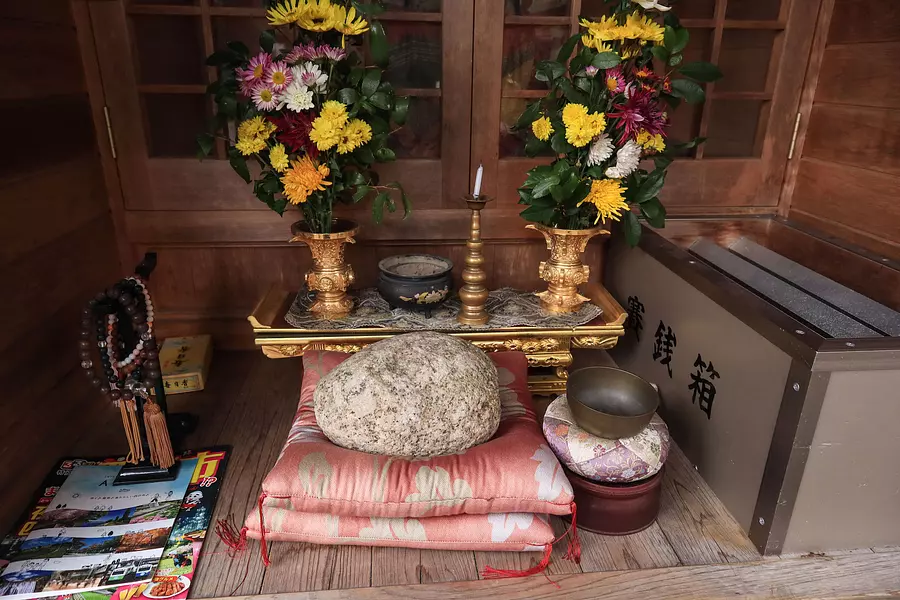
This is "Omokaru Stone". This ``Omokaru stone'', which is sometimes seen in Japanese temples and shrines, is a stone that makes wishes unique to Japan.
If you lift the Omokaru stone while thinking of your wish, and it feels light, your wish will come true. If you find a precious stone while traveling in Japan, why not give it a try?
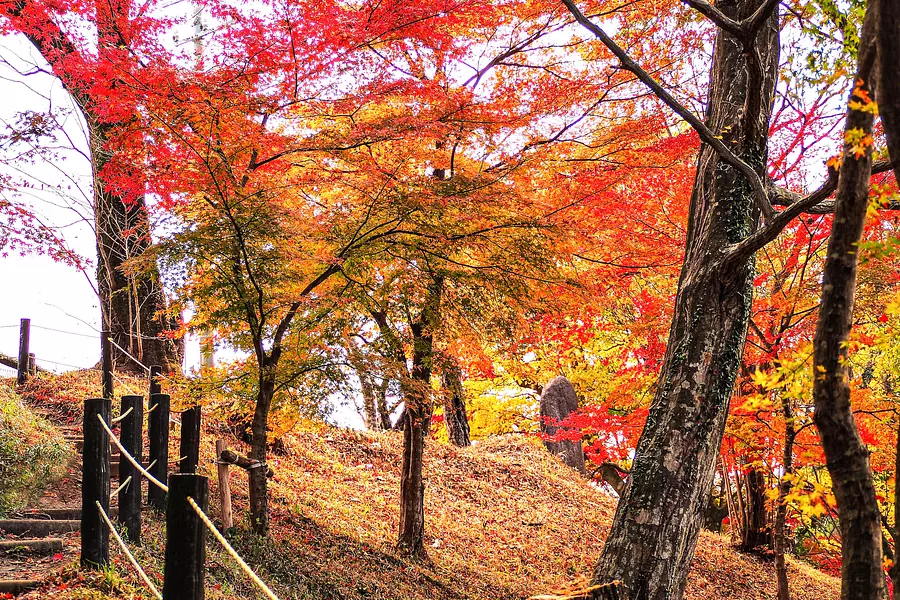
If you go up the stairs next to Namu Jizo Bosatsu, you will return to the autumn leaves tunnel where you first arrived. It's a simple autumn foliage viewing course where you won't get lost, so you can rest assured.
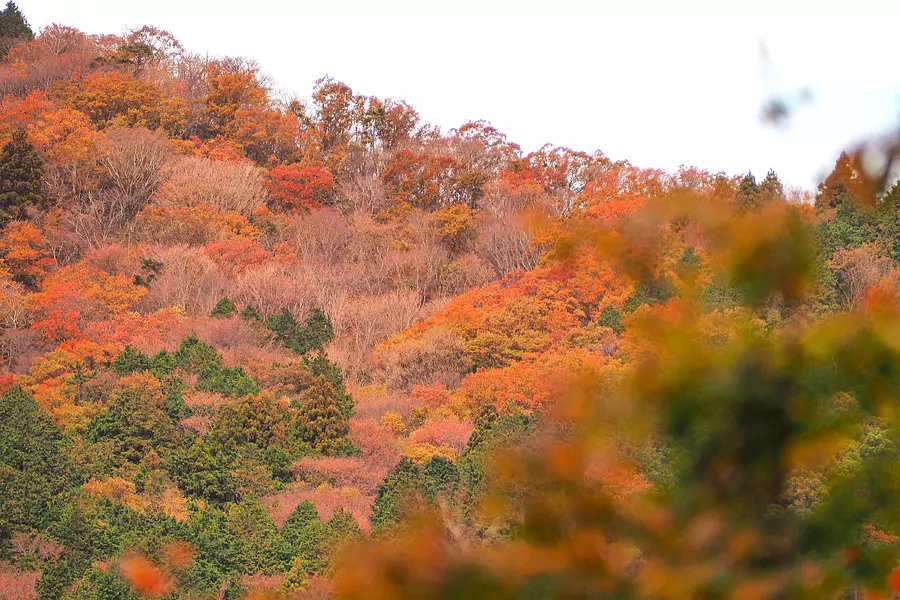
The natural composition of the Suzuka Mountains shows the contrast between various deciduous and evergreen trees, and you can enjoy a different kind of autumn scenery.
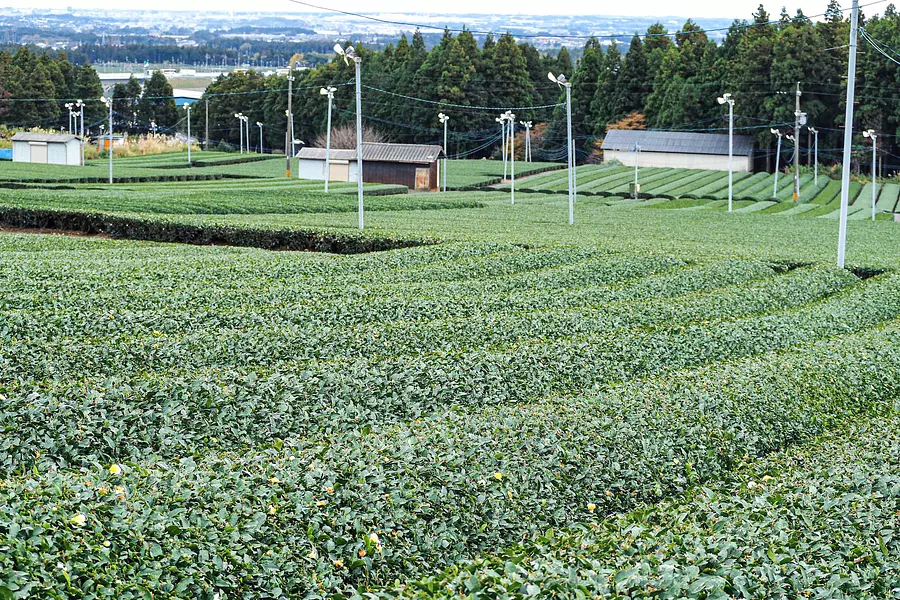
As you walk along the mountain path surrounded by autumn leaves, you will see a tea field spread out in front of you.
This large tea plantation offers a panoramic view of YokkaichiCity and Ise Bay.
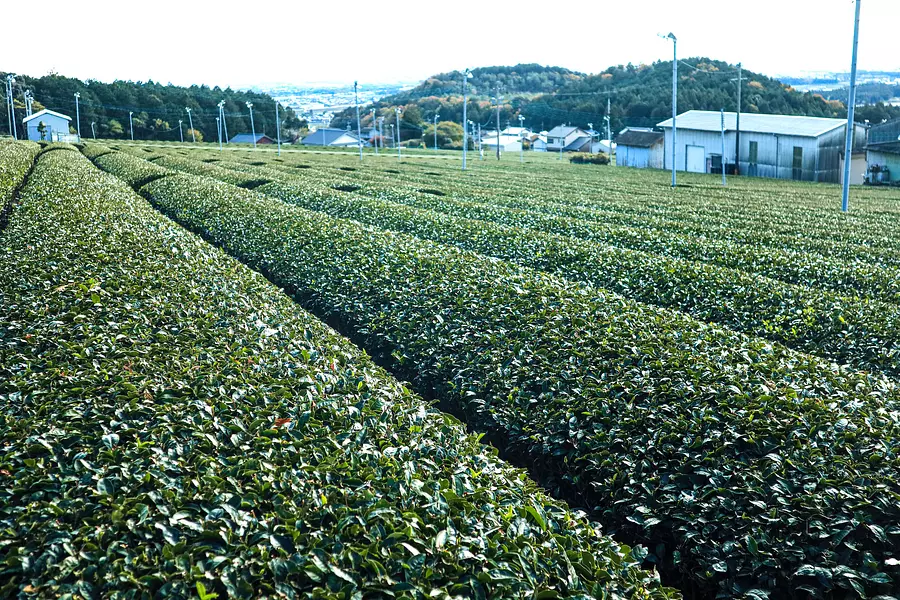
Mie Prefecture is the third largest tea producer in Japan (first place is Shizuoka Prefecture and second place is Kagoshima Prefecture), and tea produced in Mie Prefecture is also called Ise GreenTea.
suizawacho is also famous for its tea production, and its production of `` kabusetea'' ranks first in Japan!
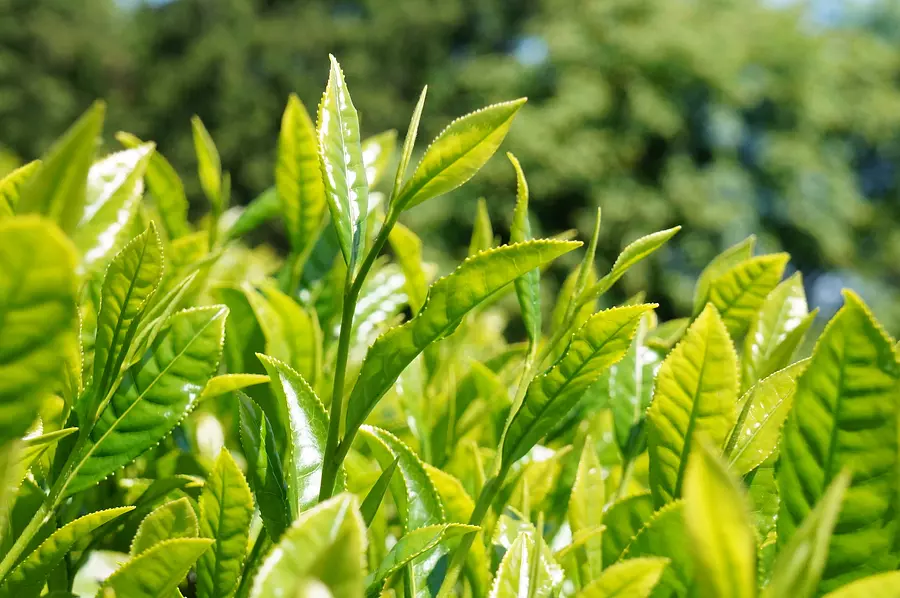
kabusetea is a type of Japanese tea, and in a broad sense it belongs to sencha. Before picking, cover the tea tree with a blackout curtain for at least 7 days and up to 17 days before picking. Because of this, kabusetea has a unique sweet aroma, is less astringent, and is rich and sweet, making it easy to drink.
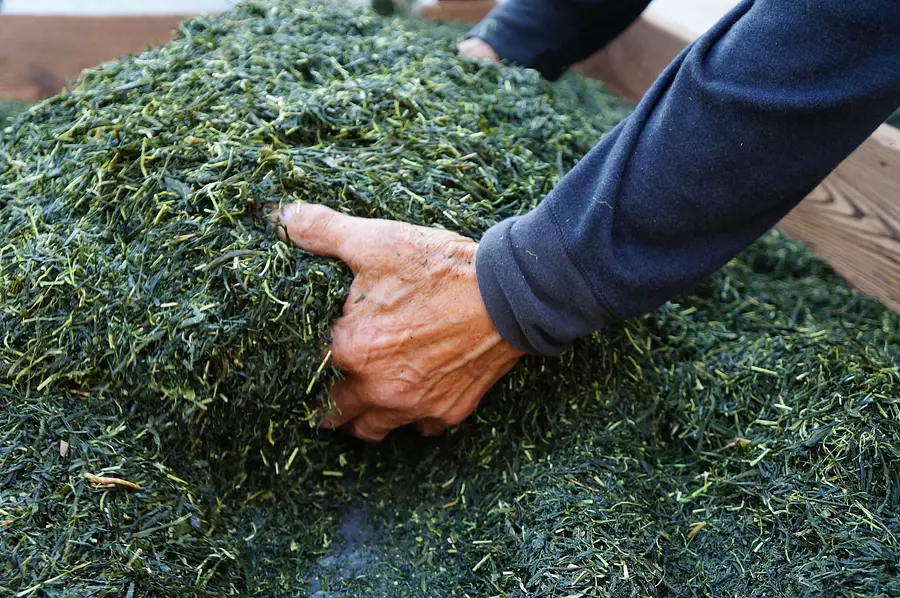
During the autumn foliage season, delicious kabusetea may warm your body.
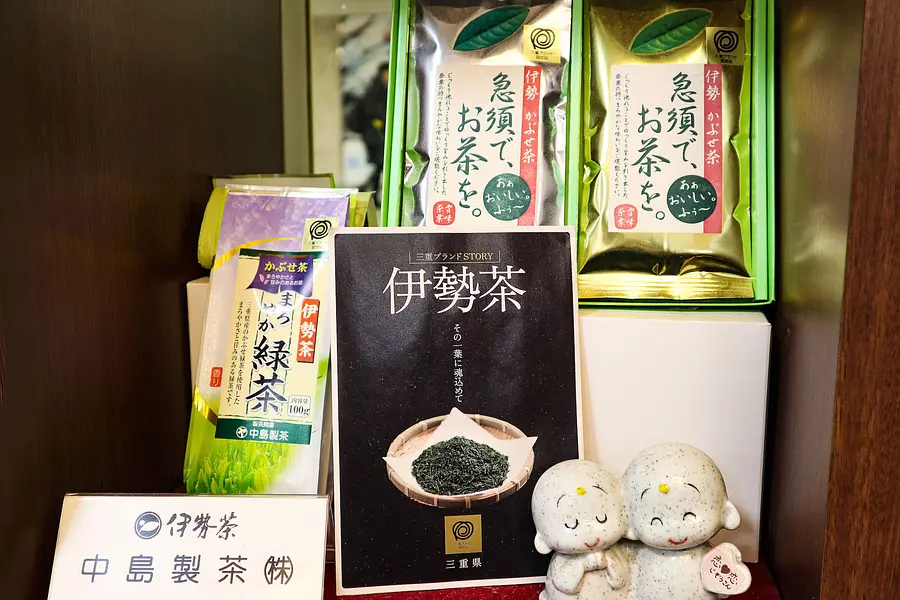
Ise GreenTea produced in Mie Prefecture, such as kabusetea, is also popular as a souvenir from a trip to Mie Prefecture. Each type of Ise GreenTea has its own merits, so please try drinking a variety of them.
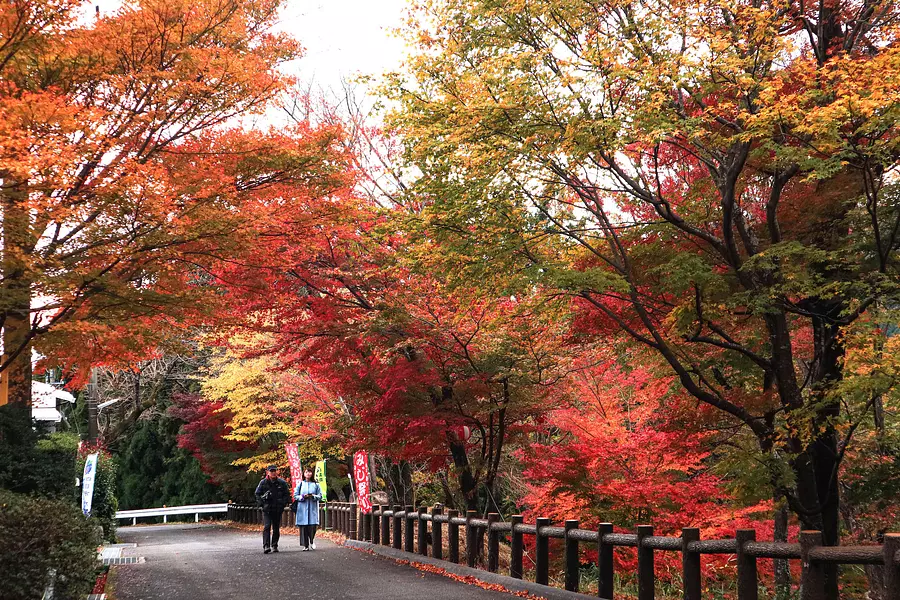
There are many trains running from Nagoya to YokkaichiCity in Mie Prefecture, making it very convenient to access.
As autumn deepens, the autumn leaves of Mizusawa Momiji Valley, the deep green tea fields (the tea fields are yellow-green when fresh tea is grown), and the overflowing negative ions will welcome you in a pleasant manner.
★Autumn leaves period: Usually from early December to mid-December
★Access: From Yokkaichi Station on the Kintetsu Nagoya Line and JR Kansai Main Line, transfer to the Sanko bus (about 50 minutes) and get off at Miyatsumaguchi. ★Admission fee: Free
Mizusawa Momiji Valley
059-329-2001
From Kintetsu Yokkaichi Station, take the bus bound for Miyatsumaguchi for 45 minutes and get off at the last stop.
20 minutes by car from Yokkaichi Interchange on the Higashi-Meihan Expressway

